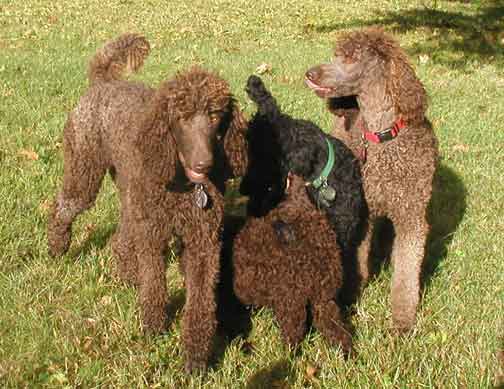Standard Poodle Coat
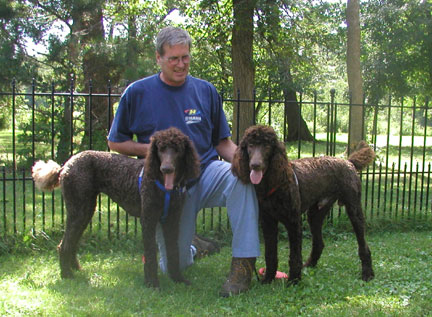
Royal Standard Poodle Coat - A Coat of Many Characteristics
Updated 7/6/16
Most of this page shares of various Royal Standard Poodle Coat Texture & Characteristics of the Brown Standard Poodles found from my research and have links available to other web pages explaining far better then I know on Red and Black coat colors.
Red pups: an excellent web page put together by Bijou Poodles in Canada to get one started in understanding the beginning of the holding red color - Red Standard Poodle history
Black, blue and silver pups; here is a great web page by Arpeggio Poodles to get one started in understanding these colorshttp://arpeggiopoodles.tripod.com/poodlecoatcolorsblueandblack.html
It is important to love your pup no matter what color or size they become :-))
The "professionals" will give you specific gene data to explain the coats below, yet I just want to make this fun :-) So, I like to use the "candy bar" in describing the Chocolate Standard Poodles coat colors, hopefully you'll grab a piece of chocolate and enjoy :-)
Coat density:
- Thinner; not a heavy coat density, easy to comb out
- Medium; a general coat density, combing isn't hard, yet plan on a few more tugs in getting a comb through it. I like my curved rake to work through their hair.
- Thick; very thick coat densitiy, HARD to get a comb through. Plan on using the rake most of the time and then the slicker brush to fluff.
*********************
1. Mismark/Abstract
This little girl was a dark chocolate with a very soft poodle coat
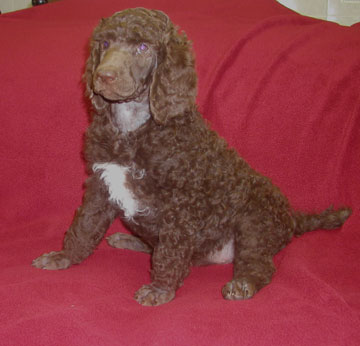
*********************
2. Phantom poodle coat
- Phantoms have markings like that found on German Shepherds or Dobermans. They can be cream, red, or white found on brown and black poodle.
- They are rarer and considered a recessive gene...back to the days the canine evolved from the wolf.
Below is a phantom born in one littler, I had 3 in that litter, none since! They grew into Royal and Standard Poodles. More prevalent in line breeding or in-breeding.
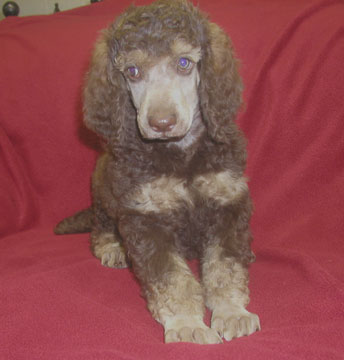
*********************
3. Regular "Chocolates" poodle coat
- "Chocolates" have mostly been VERY THICK coats, yet come in all three characteristics.
- One has this extreme tendency to want to constantly get down on the floor and lay next to them and cuddle, snuggle--as we do with Kodi :0)
- "Chocolates" MAY lighten or gray up faster than a "Dark chocolate." But because you love them, and we all generally get gray hair--it just doesn't matter :0)
Kodi in this first shot shows his brown color in his first several years, the next picture will show how he has faded over the years. He is among the Royal Standard Poodles.
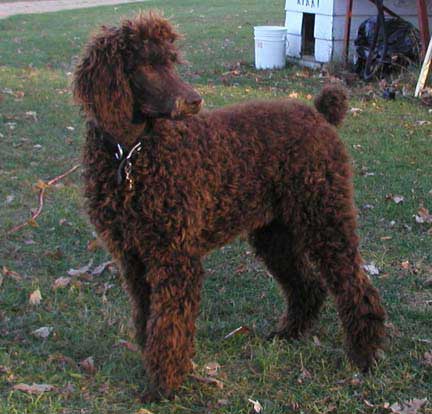
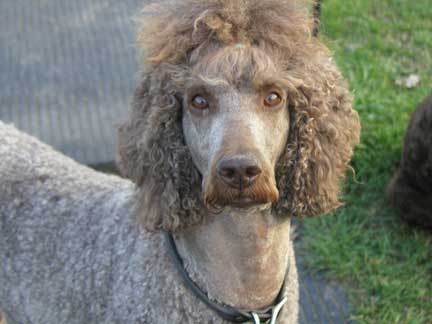
A chocolate may start to lighten or gray before one year of age. Kodi, above, didn't start graying until into 3 yrs of age. Such THICK hair he has!
As you can see in the pictures below, Juno, has started to gray after 2 years.....but it just makes us love them all the more!! :0)
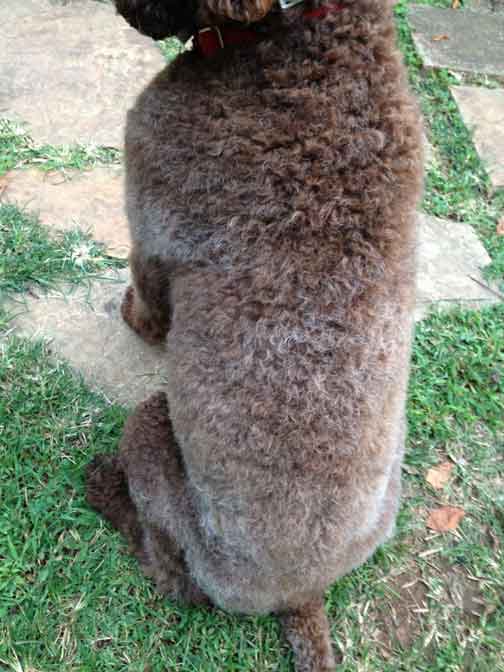
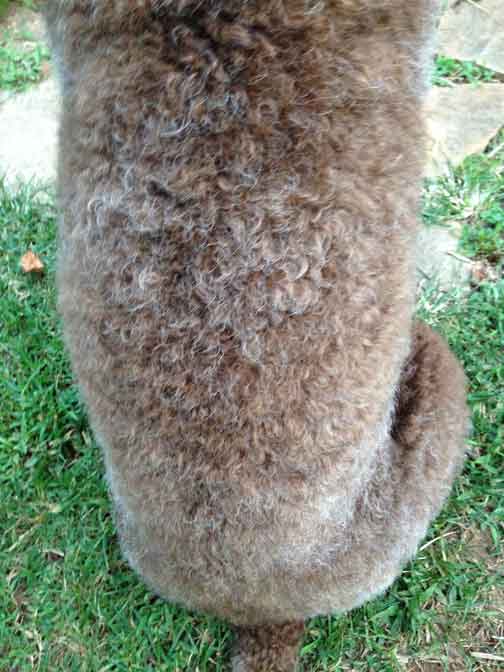
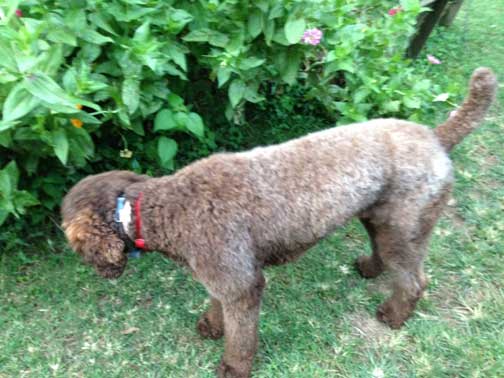
*********************
4. "Dark Chocolates" can come in a light, medium, or thick coat density being VERY soft, or being stiffer/wiry. Groomers have told me they like the wiry coat for clipping better. I would have to agree!
- Odu's hair (the adult female below) is the softest I have ever felt in most poodles. It was a medium density.
- "Dark Chocolate" coats stay browner a lot longer than the regular "Chocolate" poodle coat color. She became a Royal Standard Poodles service dog. Look at that gorgeous structure ;o)
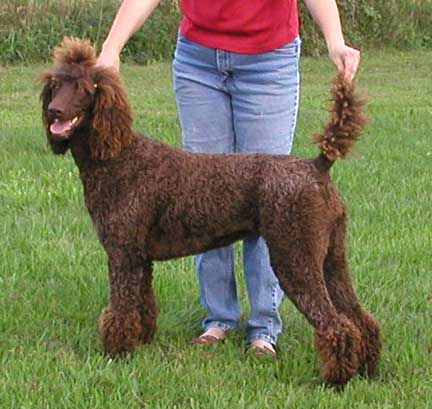
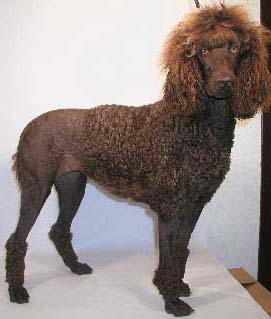
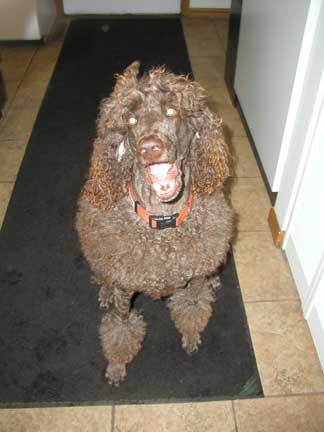
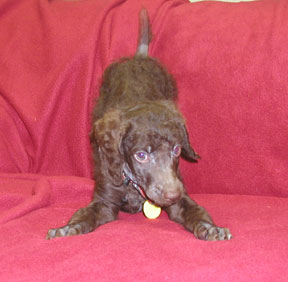
*********************
5. The "Dark Chocolate Ugly Duckling" pups (above :o) always grow into that beautiful swan - ahem - standard poodle with light to medium coat density :o) I believe you can see his thin coat compared to the same age pups with longer thicker coats.
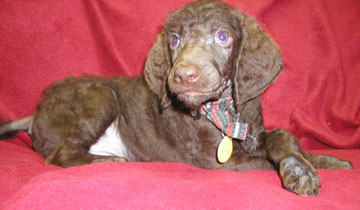
*********************
6. The Cream, Apricot, or Red colored poodle coat.
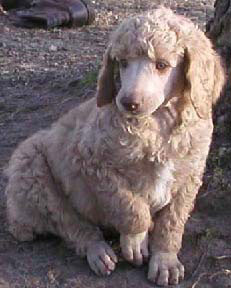
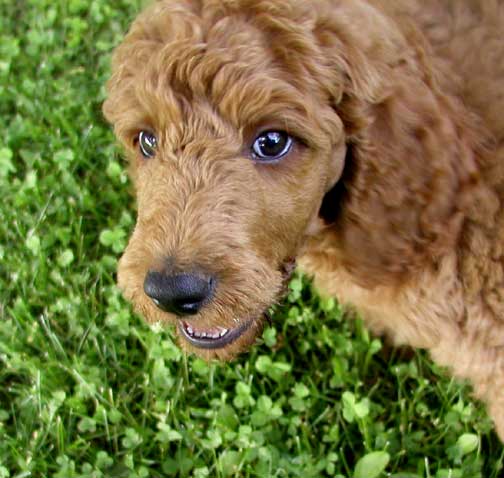
Daniel at 10 weeks old has black points and has a very red poodle coat at this time. During the winter his nose turns brown. This is called a winter nose. I have learned from various breeders, and internet research, the cold snowy states will cause the noses to lighten do to the lack of sun in the areas, their pigment isn't needed to be so black as in the hot sunny states, thus during winter months in cold states they will lighten. This throws in the confusion by some, that they don't have black points. True, some do stay black year round.
After one year of age, Daniel's coat has stayed a beautiful red. His dad actually got darker red as he aged to 11 yrs of age when I saw his picture.
There are many websites that share the history of the current dark reds we now see around. It is wonderful to be able to see this gorgeous rich color and will need continual work between breeders to help keep this around for the future.
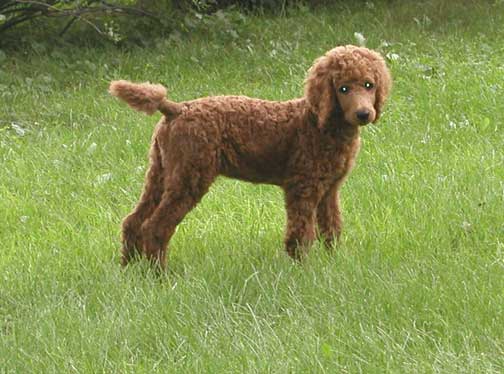
*********************
7. A Black, Blue and Silver poodle coat...Besides the first paragraph's link above to a great explanation of these colors, here is my discernment of my Standard Poodle coats with the breeding parents I currently have/have had. I've learned a lot!
Jupiter was my first male black and from the link data, he appears to be a nice "black".
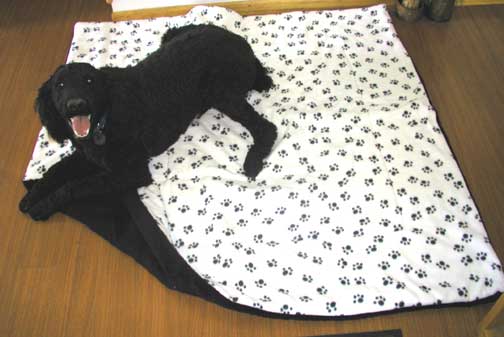
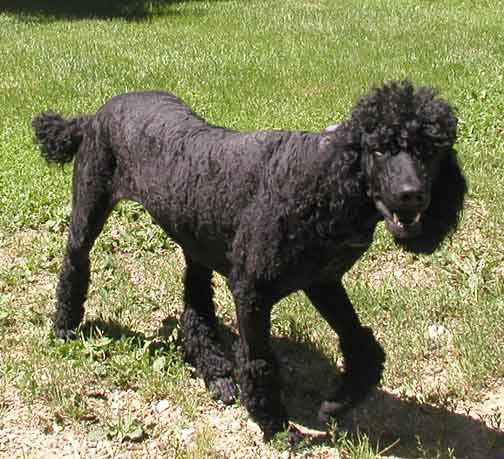
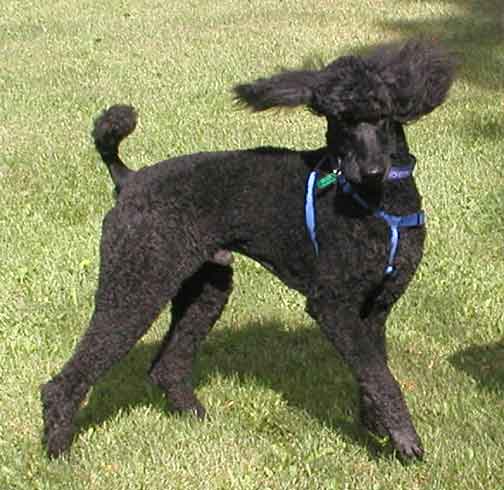
Silver: I tried to work with silver one year and became too frustrating for me and customers in not being able to know if a black pup was going to turn silver by 8 wks of age, thus I do not breed for silvers at all any more.
When buying one of our Royal Standard Poodles, yes you have your idea of "A Perfect Pup" yet don't forget to look at who they will become with your love and family :-)
Breeders and other notes:
Royal Standard Poodle coats will vary with Puppies for Sale
see customer picture links above!
